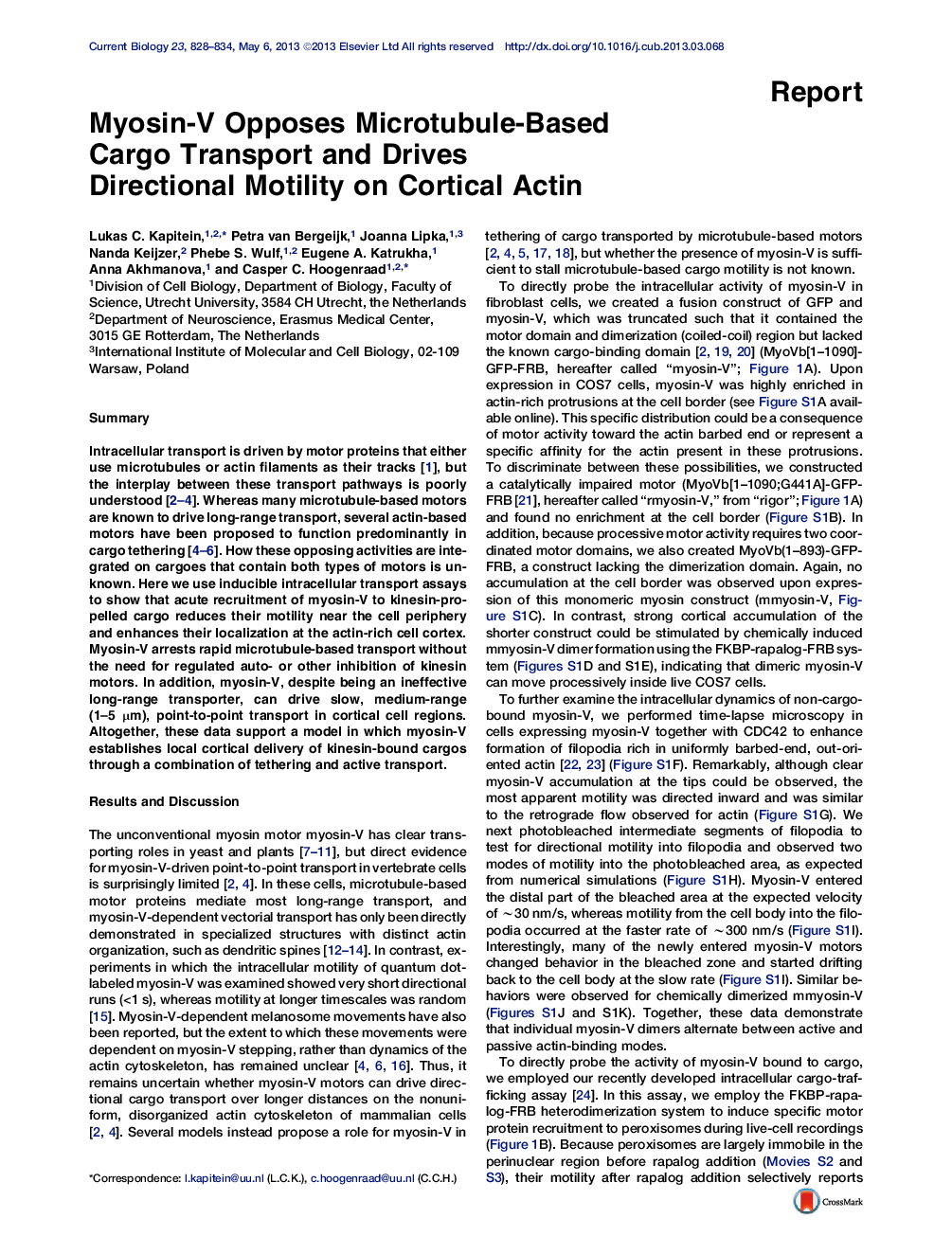| Article ID | Journal | Published Year | Pages | File Type |
|---|---|---|---|---|
| 2042778 | Current Biology | 2013 | 7 Pages |
SummaryIntracellular transport is driven by motor proteins that either use microtubules or actin filaments as their tracks [1], but the interplay between these transport pathways is poorly understood [2, 3 and 4]. Whereas many microtubule-based motors are known to drive long-range transport, several actin-based motors have been proposed to function predominantly in cargo tethering [4, 5 and 6]. How these opposing activities are integrated on cargoes that contain both types of motors is unknown. Here we use inducible intracellular transport assays to show that acute recruitment of myosin-V to kinesin-propelled cargo reduces their motility near the cell periphery and enhances their localization at the actin-rich cell cortex. Myosin-V arrests rapid microtubule-based transport without the need for regulated auto- or other inhibition of kinesin motors. In addition, myosin-V, despite being an ineffective long-range transporter, can drive slow, medium-range (1–5 μm), point-to-point transport in cortical cell regions. Altogether, these data support a model in which myosin-V establishes local cortical delivery of kinesin-bound cargos through a combination of tethering and active transport.
Graphical AbstractFigure optionsDownload full-size imageDownload high-quality image (248 K)Download as PowerPoint slideHighlights► Myosin-V alternates between active and passive actin-binding modes ► Myosin-V opposes kinesin-propelled cargo redistribution ► Myosin-V anchors kinesin-propelled cargo in actin-rich areas ► Myosin-V can drive medium-range directional transport at the cell periphery
